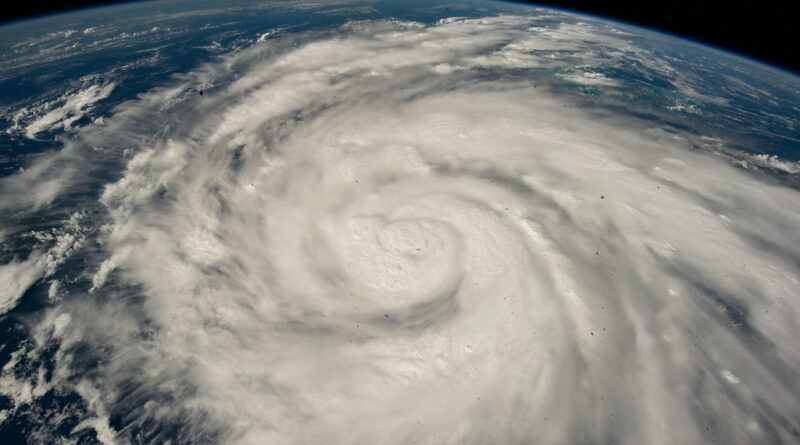Hurricane Ian
Hurricane Ian: Unveiling Nature’s Fury and the Pursuit of Resilience
Introduction
In the ever-changing tapestry of weather patterns, hurricanes stand as formidable forces of nature, capable of reshaping landscapes and leaving indelible marks on communities. Hurricane Ian, a recent addition to the roster of powerful storms, carved its path across regions, prompting discussions on climate change, disaster preparedness, and the need for resilient infrastructure. In this blog post, we unravel the story of Hurricane Ian, exploring its genesis, impact, and the lessons it imparts on our journey toward building a more resilient future.
Understanding Hurricane Ian: The Genesis
Hurricane Ian, like all tropical cyclones, began its journey over warm ocean waters. The intricate interplay of atmospheric conditions, including warm sea surface temperatures and low wind shear, provided the ideal breeding ground for the storm’s formation. Born in the heart of the Atlantic, Hurricane Ian gradually gained strength, evolving from a tropical disturbance into a full-fledged hurricane.
The Path of Destruction: Impact and Consequences
As Hurricane Ian gained momentum, meteorologists closely monitored its path, issuing warnings and evacuation notices in its trajectory. The storm’s impact, when it made landfall, was profound—torrential rains, powerful winds, and storm surges wreaked havoc on coastal communities. The aftermath painted a stark picture of destruction, with flooded streets, damaged infrastructure, and displaced residents bearing witness to the unforgiving force of nature.
Climate Change and Hurricanes: Unraveling the Connection
Hurricane Ian’s intensity and impact raise questions about the role of climate change in shaping the behavior of hurricanes. Scientists assert that rising sea temperatures contribute to the increased frequency and strength of tropical cyclones. The warming of the Earth’s oceans serves as fuel for hurricanes, amplifying their destructive potential. Hurricane Ian became a case study in understanding the complex relationship between climate change and extreme weather events.
Lessons from the Past: Historical Hurricanes and Resilience
Hurricane Ian is not the first storm to leave a lasting impact, nor will it be the last. Historical hurricanes, such as Katrina and Sandy, have left enduring scars on the collective memory, prompting a reevaluation of disaster preparedness and response strategies. The resilience of communities that have weathered such storms provides valuable lessons in fortifying against future challenges.
Disaster Preparedness: A Key to Mitigating Impact
The aftermath of Hurricane Ian underscores the critical importance of disaster preparedness. Early warning systems, robust evacuation plans, and community engagement are pivotal in minimizing the human and economic toll of such natural disasters. As we reflect on the experiences of those affected by Hurricane Ian, it becomes evident that investments in preparedness can significantly reduce vulnerabilities and enhance the ability to recover swiftly.
Building Resilient Infrastructure: A Call to Action
Hurricane Ian serves as a stark reminder of the vulnerability of our infrastructure to extreme weather events. The need for resilient buildings, fortified coastal defenses, and sustainable urban planning becomes more apparent than ever. The aftermath of Hurricane Ian prompts a call to action, urging policymakers, engineers, and communities to invest in infrastructure that can withstand the ferocity of future storms.
Community Resilience: The Human Spirit in the Face of Adversity
Amidst the wreckage left by Hurricane Ian, stories of resilience emerge—neighbors helping neighbors, communities coming together, and individuals showing strength in the face of adversity. The human spirit, tested by the forces of nature, reveals its innate capacity to overcome challenges and rebuild. These stories become beacons of hope, illustrating the power of unity in the wake of a disaster.
The Role of Technology: Innovations in Disaster Response
Advancements in technology play a pivotal role in disaster response and recovery. From sophisticated weather prediction models to drones aiding in search and rescue operations, technology offers new tools for mitigating the impact of hurricanes. Harnessing innovation becomes imperative as we navigate a future where the frequency and intensity of extreme weather events are likely to increase.
Global Collaboration: A Unified Front Against Climate Challenges
Hurricane Ian, like its predecessors, highlights the interconnected nature of climate challenges. Global collaboration becomes essential in addressing the root causes of extreme weather events and mitigating their impact. International efforts to reduce carbon emissions, protect biodiversity, and promote sustainable practices contribute to a collective response against the broader backdrop of climate change.
Conclusion: Navigating Stormy Seas with Resilience
Hurricane Ian, with its tale of destruction and resilience, underscores the need for a holistic approach to addressing the challenges posed by extreme weather events. From climate-conscious policies to community-driven initiatives, the path towards resilience requires a multi-faceted strategy. As we reflect on the lessons learned from Hurricane Ian, we must strive to build a future where communities are not only prepared for the storms that come their way but also possess the strength to weather them and emerge stronger on the other side.
